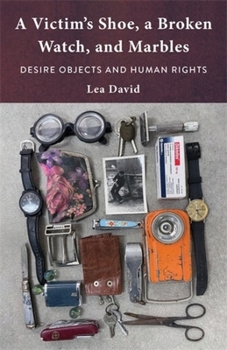A Victim's Shoe, a Broken Watch, and Marbles: Desire Objects and Human Rights
Everyday items found at the sites of atrocities possess a striking emotional force. Victims' garments, broken glasses, wallets, shoes, and other such personal property that are recovered from places of death including concentration camps, mass graves, and prisons have become staples of memorial museums, exhibited to the public as material testimony in order to evoke sympathy and promote human rights. How do these objects take on such power, and...
Format:Hardcover
Language:English
ISBN:0231217730
ISBN13:9780231217736
Release Date:December 2024
Publisher:Columbia University Press
Length:344 Pages
Weight:1.29 lbs.
Dimensions:0.9" x 5.5" x 8.5"
Customer Reviews
0 rating





